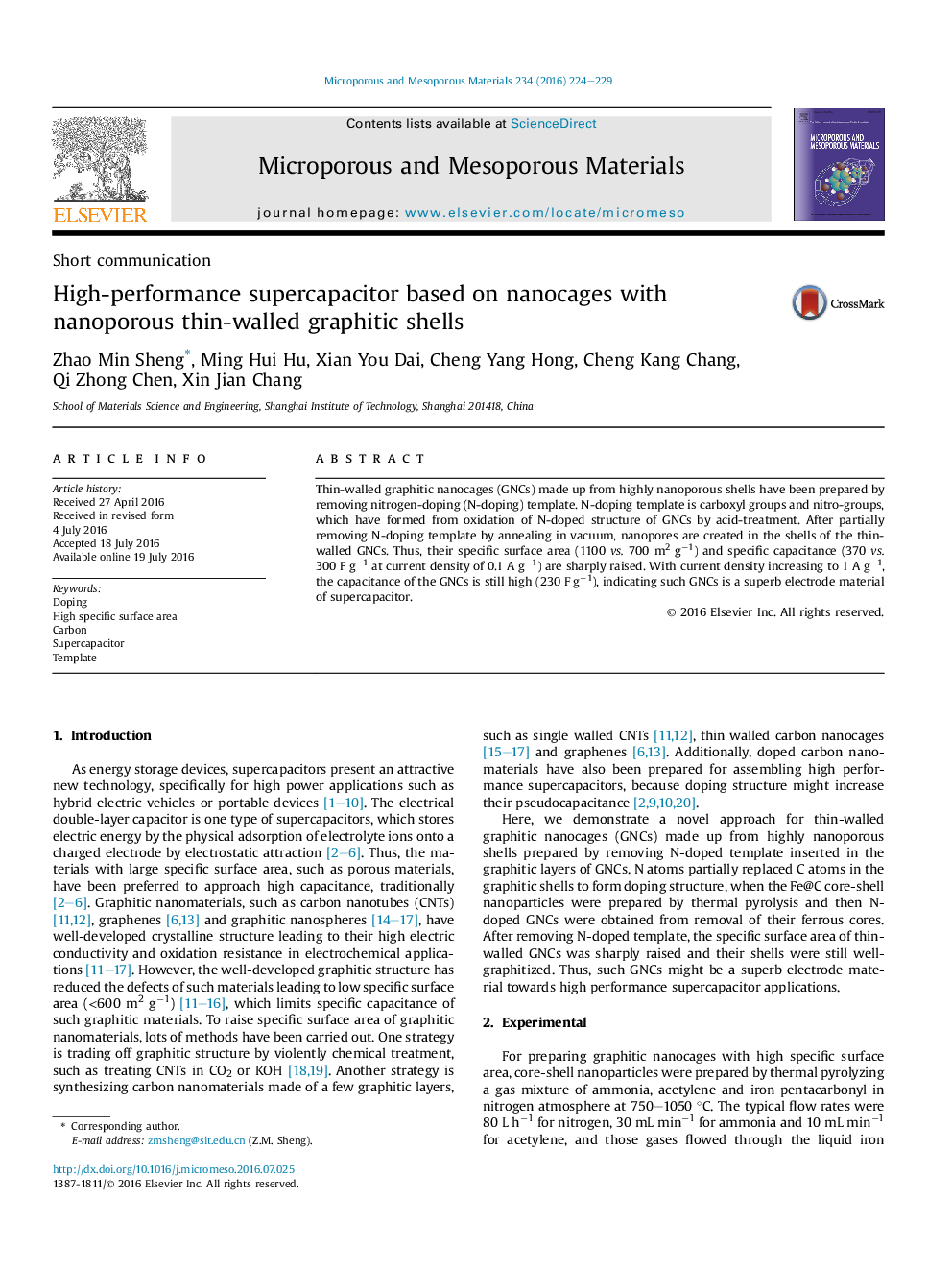| Article ID | Journal | Published Year | Pages | File Type |
|---|---|---|---|---|
| 71932 | Microporous and Mesoporous Materials | 2016 | 6 Pages |
•N-doping structure of graphitic shells is a defect and oxidized easily.•Oxidization of N-doping structure forms carboxyl groups and nitro-groups.•Partially removing the groups creates nanopores in the shells of nanocages.•Such nanoporous shells increases surface area and capacitance of materials.
Thin-walled graphitic nanocages (GNCs) made up from highly nanoporous shells have been prepared by removing nitrogen-doping (N-doping) template. N-doping template is carboxyl groups and nitro-groups, which have formed from oxidation of N-doped structure of GNCs by acid-treatment. After partially removing N-doping template by annealing in vacuum, nanopores are created in the shells of the thin-walled GNCs. Thus, their specific surface area (1100 vs. 700 m2 g−1) and specific capacitance (370 vs. 300 F g−1 at current density of 0.1 A g−1) are sharply raised. With current density increasing to 1 A g−1, the capacitance of the GNCs is still high (230 F g−1), indicating such GNCs is a superb electrode material of supercapacitor.
Graphical abstractFigure optionsDownload full-size imageDownload as PowerPoint slide
